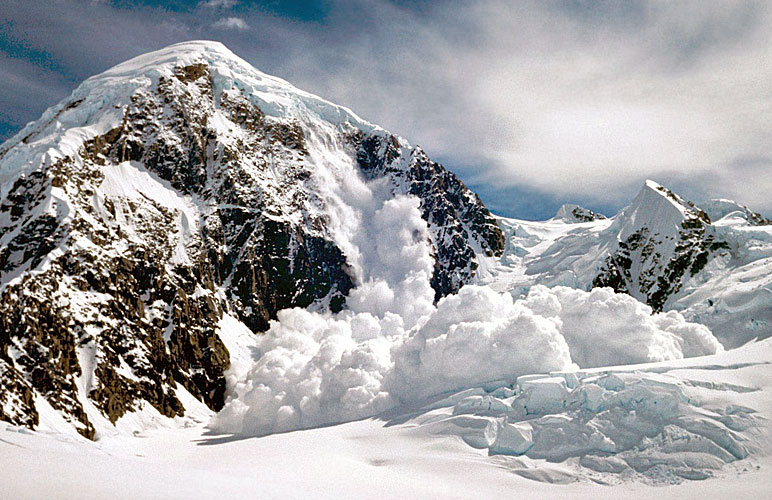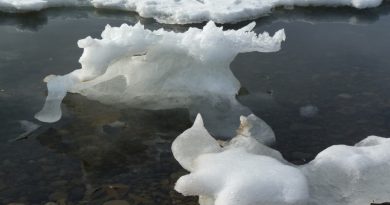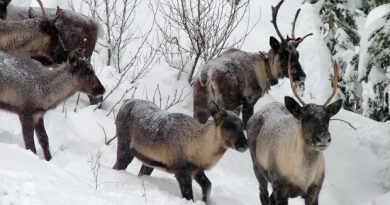When it comes to avalanches, you can’t buy sound judgment
 Girdwood skier Elyse Saugstad believes an ABS Avalanche Airbag Backpack saved her life in a deadly, weekend avalanche in the Cascade Mountains of Washington state, and it probably did.
Girdwood skier Elyse Saugstad believes an ABS Avalanche Airbag Backpack saved her life in a deadly, weekend avalanche in the Cascade Mountains of Washington state, and it probably did.
The emergency gear, which can be triggered to inflate a float around the head of someone caught in an avalanche, has a sterling reputation in Europe, where it was pioneered.
Likely because of that float, Saugstad’s head was above the avalanche rubble after the snow stopped moving.
Even though nearly all of the rest of her was buried.
She was dug out alive. Three others were not so lucky, but you have to wonder what killed them.
“All the people in the party were properly equipped and experienced backcountry travelers,” Saustad wrote on her blog in a “press statement for the media.”
This has been the narrative since the tragic accident Sunday near Stevens Pass, about 75 miles northeast of Seattle. “Well-equipped and familiar with the terrain, about a dozen expert skiers were making their way through a foot-and-a-half of fresh snow when an avalanche hit them in an out-of-bounds area near a popular Washington ski resort,” reported the Minneapolis Star Tribune.
“From what I’m told, they were all very knowledgeable, expert skiers,” King County Sheriff’s Sgt. Katie Larson told the Yakima Herald.
Why then are they dead?
“That’s the risk that we take,” Joel Hammond, who was with the group, told KING 5 News.
It is, sadly, that sort of thinking that finally drove Anchorage’s Doug Fesler out of the avalanche-education business. Fesler founded the Alaska Avalanche School in 1976. It’s still in business and remains an excellent place to learn about avalanches and how to avoid them. But Fesler is no longer teaching. Once a big believer in the power of education, he spent too many years digging the bodies of former students out of avalanches. He finally came to understand that the most important piece of avalanche “gear” is the brain, and it’s hard to train.
The importance of avalance education
Fesler, wife Jill Fredston and Bruce Temper of the Utah Avalanche Forecast Center eventually co-authored a paper titled “The Human Factor — Lessons for Avalanche Education.” In that paper, Fesler and his co-authors recognize that most deadly avalanches are triggered by people, as just happened in Washington.
They go on to say: “Most accidents occur because the victims either underestimate the hazard or overestimate their ability to deal with it. Victims tend to make critical decisions based on human desires and assumptions rather than upon the integration of key pieces of physical data.”
All of which is a complicated way of saying people get so preoccupied with having fun that they stop thinking about how the snow-world in which they are playing could kill them. And now, three people — expert skiers all — are dead. The story only tangentially touches the 49th state because one of the people caught in the avalanche was an Alaskan. And yet the whole disaster could just as easily have happened here.
There are slopes in the mountains all around Anchorage today with nasty layers of hard, wind-packed snow atop crumbling layers of old sugary snow, waiting for the right conditions or the unthinking person to trigger a slide. When Fesler started the local avalanche school back in the 1970s, the people who ventured into the backcountry worried about conditions like these a fair bit. Increasingly, there is a tendency to put the worries aside in favor of technology.
The thought process goes like this: “I’m wearing an avalanche beacon. I’ve got on an ABS backpack. Me, why worry?”
Why worry? Because neither of those pieces of gear — nor the old-fashioned shovel and probe that should be carried by everyone in avalanche country — are the most important equipment. That’s the brain. It makes the decisions. The people who use it to determine conditions are just a little too dicey and retreat home, get to ski, snowboard or snowmachine another day.
The Washington accident was horrible and tragic. Maybe if some Alaskans pay attention, lives can be saved. Both the ABS that saved Saugstad and the beacon are last-ditch survival tools. The key is to avoid having to use them. They often don’t prevent tragedy. The beacons on the three dead skiers in Washington were used only to find their bodies.
The paradox here is that too many “properly-equipped” people die in avalanches while a whole bunch of those equipped with nothing but avalanche awareness go home to return another day. It’s not about the equipment.
Contact Craig Medred at craig(at)alaskadispatch.com
For more stories from Alaska Dispatch, click here.



